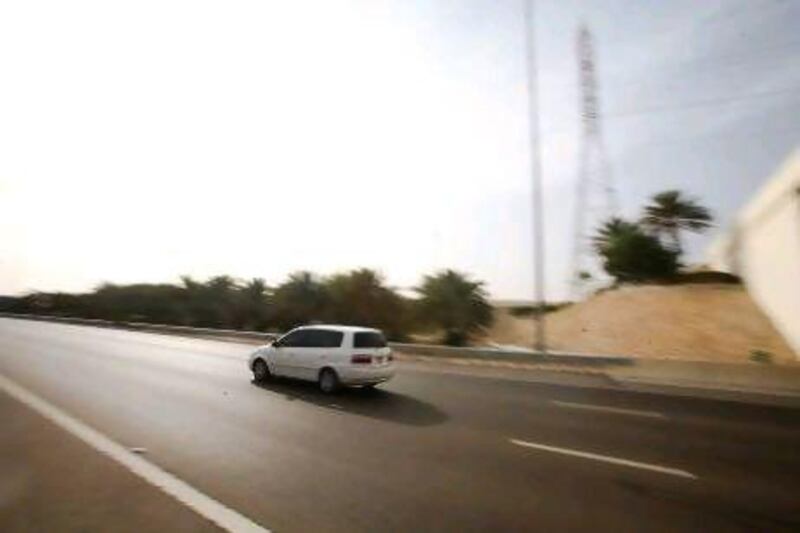ABU DHABI // Early warnings to prepare drivers for sharp bends, speed limit signs, concise directional signs and high-friction surfaces to improve skid resistance are some of the planned upgrades on the Abu Dhabi-Al Ain motorway.
The Department of Transport (DoT), which yesterday announced a one-year plan to improve the E22, said the upgrade would also include road barriers and improved signage for farm and residential entrances. Those measures are at their final design phase and are to be implemented "in the near future".
The one-year plan to improve the motorway was based on an analysis of crash sites.
The main roads division of DoT will implement a number of road safety programmes, including short- and long-term projects as part of its plans to improve traffic engineering standards on all major main roads within and surrounding Abu Dhabi.
One of these is the upgrade of the Mafraq-Ghweifat motorway, which has had a significant reduction in fatalities, DoT officials said.
The DoT urged drivers to be cautious while work is in progress on the E22, abide by road safety rules and follow speed limits.
"The road safety assessments of the DoT have proven to reduce crashes," said Dr Abdulilah Zineddin, a highway and road safety expert in Abu Dhabi. "It is doing a great job especially on engineering-related efficiency which contributes to road safety performance."
However, enforcement should be re-examined, he said.
The speed limit on the E22 is still 160kph, while the Abu Dhabi-Dubai road is 140kph," Dr Zineddin said. "This is quite high and DoT should do its part through a more comprehensive approach, including enforcement, if it wants to reduce accidents."
A DoT study from Al Ain found that 50 to 80 per cent of drivers disregarded the speed limit. Data was collected from 120 locations on the city's road network, including six points on the E22.
The study found that 18 per cent of motorists drive over 160kph, 60 to 70 per cent go faster than 140kph and 30 per cent drive below 110kph. Such drastic variations are a leading cause of crashes.
This year, police and road safety experts suggested lowering the enforced speed limit to 140kph on the E22 to reduce crashes.
In the first quarter of 2012, the number of road deaths on the E22 decreased, but the number of crashes remained nearly constant over the same period in 2011.
Police recorded 87 crashes, six deaths and 14 serious injuries, 36 medium injuries and 31 minor injuries on the E22 in the first quarter of 2012.
In the same period of 2011, there were 83 crashes, 10 deaths, 14 serious injuries, 27 medium injuries and 32 minor injuries.






